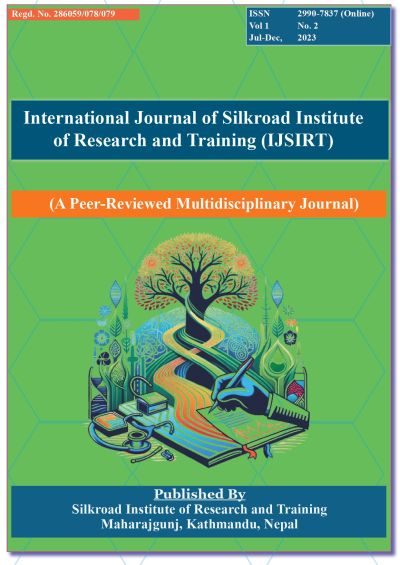Trend Analysis of Inflation and its Relationship with Economic Growth of Nepal
DOI:
https://doi.org/10.3126/ijsirt.v1i2.61664Keywords:
inflation, consumer price index, money supply M2, real GDP, NepalAbstract
Background: The price level and its growth, inflation, is an important economic indicator. Inflation can be defined as the persistent rise in the general price level across the economy over time. Inflation is an increase in the volume of money and credit relative to available goods resulting in a substantial and continuing rise in the general price level. Inflation is everywhere and is interestingly touchy issue in macroeconomics.
Methods: This research is cross-sectional and analytical and is completely based on secondary data to examine the trend and impact of inflation on economic growth rate of Nepal. To find the relationship between inflation, GDP, growth rate, money supply, CPI correlation matrix and multiple regression model were used.
Results: Globally the inflation rate of emerging and developing economies is projected to decline by 0.2 percentage points to 4.9 percent in 2021 from 5.1 percent in 2020. In 2021, among the South Asian countries Pakistan is expected to have the highest inflation and Maldives the lowest. The average inflation rate of Nepal during 2015 to 2020 was 6.1 percent. There is fluctuation in annual inflation rate. The trend of GDP and CPI index of Nepal is in increasing order. There is negative correlation between GDP and Inflation while positive correlation of GDP with growth rate, CPI, Money supply.
Conclusions: It is very important that inflation be controlled in order to address poverty as well as economic growth. It can safely be concluded that policies that stabilizes the inflation to the certain threshold level matters for the long run economic growth
Downloads
Downloads
Published
How to Cite
Issue
Section
License
Copyright (c) 2023 Hari Prasad Upadhyay; Bijay Lal Pradhan

This work is licensed under a Creative Commons Attribution-ShareAlike 4.0 International License.
CC BY-SA: This license allows reusers to distribute, remix, adapt, and build upon the material in any medium or format, so long as attribution is given to the creator. The license allows for commercial use. If you remix, adapt, or build upon the material, you must license the modified material under identical terms.




